What happens when an Oscar-nominated director makes a documentary film about a cult actress from the early years of the adult film industry?
Barry Spinello made ‘A Film About Sharon’ about Sharon Thorpe in 1975 – the same year he made the Academy Award-nominated short ‘A Day in the Life of Bonnie Consolo’. He’s a talented director with a unique style, and the unsentimental compassion he has for his subjects.
In between making a series of documentary shorts, Spinello also cut his teeth making ‘Bizarre Devices’ (1973) and ‘Massage Parlor Wife’ (1975) – one of Serena’s first films, two of the more interesting soft-core films of the era.
As for Sharon Thorpe, star of films such as ‘3 A.M.’ (1975) and ‘Coming Attractions’ (1976), she remains one of the reasons we were inspired to started The Rialto Report.
So what of ‘A Film About Sharon’? Why has it almost disappeared from circulation? And is it the best documentary about the business that you’ve never seen?
The Rialto Report speaks to the film’s director, Barry Spinello, to find out more.
_______________________________________________________________________________________________
1. Beginnings
Born in Brooklyn, N.Y. Barry Spinello attended Midwood High School where he was president of the band and orchestra and co-captain of the track team. He was a child radio actor on WNYE and WNYC FM, in New York City.
How did you become interested in film?
I went to Columbia University in 1962 and studied English, music and painting. Then I won a scholarship to the architecture school there, but I left after two years to study painting independently in Florence, Italy. When I returned I started making experimental animation.
I’ve had three careers: Experimental animation, documentary portraits about people, and feature films.
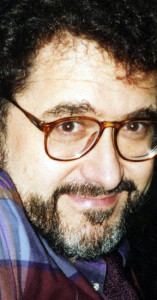 How did you come to make the film ‘Bizarre Devices’ in 1973?
How did you come to make the film ‘Bizarre Devices’ in 1973?
In the early 1970s I was in San Francisco, a lawyer called me and asked me to make a documentary about a man named Dave Harvey, who’d been in a serious traffic incident. It was due to come trial within two weeks, and so he asked me to make a film about Dave before the trial. I made ‘A Day in the Life of Dave Harvey’ (1972) to show what it was like being a paraplegic. They showed it out of court, and he won the largest settlement at that time.
One of the things Dave Harvey wanted to do with his money was to fund a feature film.
I’d just collaborated with a guy named Paul Aratow, and made an educational film called ‘Film Graphics: Abstract Aspects of Editing’ (1973). It had been a positive experience, so the two of us co-produced and co-directed a film called ‘Bizarre Devices’ (1973).
Experienced San Francisco filmmaker, Paul Aratow, had worked in film in various capacities – including being the cinematographer on Alex De Renzy’s ‘Weed’ (1971).
What do you remember about the production of ‘Bizarre Devices’?
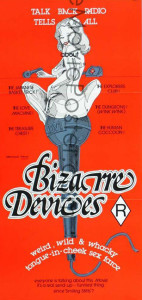 ‘Bizarre Devices’ was a soft X, sort of sexploitation type film. Not that it was a bad effort, it was fine. The theme was there was a radio talk show, and people would call in and describe their experiences with bizarre sexual devices.
‘Bizarre Devices’ was a soft X, sort of sexploitation type film. Not that it was a bad effort, it was fine. The theme was there was a radio talk show, and people would call in and describe their experiences with bizarre sexual devices.
The budget of ‘Bizarre Devices’ was $70,000. It had pretty high production values. Paul Aratow’s cousin, a guy named Robbie Greenberg, shot it – he went on to have a big career as a cinematographer in Hollywood. Scott Beach and Terry McGovern, who were quasi-noted actors in the San Francisco area, were in starring roles.
Scott Beach and Terry McGovern were also in ‘American Graffiti’ (1973) that same year, and both went on to work with George Lucas on episodes of ‘Star Wars’ amongst other films.
I took ‘Bizarre Devices’ to Harry Novak to distribute it. Harry was great. He took it and said, “Yes, I want this film.” Unfortunately I couldn’t give it to him, because Dave Harvey and Paul Aratow decided to do something else with it. So instead Harry Novak says, “I’ll tell you what. If you bring me a different project tomorrow, I’ll fund it.”
Was that project ‘Massage Parlor Wife’?
Yes, I was walking home. I looked in the window of a porno bookstore, and I saw a book with the title ‘Massage Parlor Wife’. I never even bought the book. I went home and wrote a treatment called ‘Massage Parlor Wife’. Harry Novak gave me $35,000 to make it in Berkeley with me producing, directing, editing, gophering, basically doing everything.
‘Massage Parlor Wife’ (1975) was one of the first films starring future adult film star Serena (credited as Jen Gillian).
How did you come across Serena?
I put out a casting notice at UC Berkley, and I had a girl who really wanted to be in the film. I was rehearsing her to star in the film when I got a call from Harry Novak, and he said, “I’m sending a girl named Serena down. She’s going to be a star. She’s in it. The other one’s out.” I got off the phone and I had to let this poor girl go.
What do you remember about the production of ‘Massage Parlor Wife’
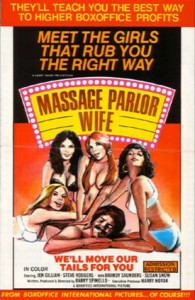 ‘Massage Parlor Wife’ wasn’t a hardcore film. It wasn’t my intention to make an explicit film. Harry tried to push me to make it harder core. In fact there was one scene in the movie that I didn’t even put in. After I left Harry inserted the scene to make it a more hard core.
‘Massage Parlor Wife’ wasn’t a hardcore film. It wasn’t my intention to make an explicit film. Harry tried to push me to make it harder core. In fact there was one scene in the movie that I didn’t even put in. After I left Harry inserted the scene to make it a more hard core.
I didn’t like the experience of making Massage Parlor Wife. It was real hard work. It was ten days and we still hadn’t finished so I went to Harry and I said, “I need another day, an eleventh day.” Eleven days was an eternity for a movie shoot. Anyway he gave me the day, and then I went and edited it for four months in Los Angeles in his studio.
I then forgot about it. I didn’t realize that ‘Massage Parlor Wife’ was such a good film. I’ve had no connection to it. Since them I’ve seen people write about it. I was told by Harry Novak’s bookkeeper that it grossed over a million dollars for him.
2. ‘A Day in the Life of Bonnie Consolo’ (1975)
What did you work on next?
In 1975 I made a short documentary film, ‘A Day in the Life of Bonnie Consolo’.
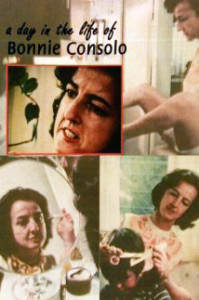 Bonnie J. Consolo was a Kentucky native who was born without hands or arms. She tried artificial arms but found them uncomfortable and never acclimated to them.
Bonnie J. Consolo was a Kentucky native who was born without hands or arms. She tried artificial arms but found them uncomfortable and never acclimated to them.
Her life captured the attention of the American media in the 1970s when Spinello’s documentary was released. At the time, she was a housewife living in Columbus, Ohio.
The film received an Academy Award nomination in 1976 for Live Action Short Film. The release of the film also led Mike Wallace of CBS’s 60 Minutes news program to interview Consolo for the program. The segment became one of the program’s most popular interviews, and went on to become one of the show’s most heavily requested repeat segments.
What was your approach in making this film?
As with all my documentary films, they’re based on the person themselves. I consider them portraits of people, so I would interview the person, usually just with a tape recorder, and then understand everything about their life.
I wanted to show that Bonnie was like any other suburban housewife and mother. She had children, goes grocery shopping, and does everything that a woman in her position would do.
The trailer for ‘A Day in the Life of Bonnie Consolo’ (1975):
Did you go to the Oscar ceremony?
Yes, and I was nominated again for another Academy Award a few year later for another film, ‘Erica: Not in Vain, Once Upon a Time’ (1983) though we didn’t make the final shortlist.
3. ‘A Film About Sharon’ (1975)
How had you come across Sharon Thorpe?
I think I’d met Sharon in the context of interviewing people to make ‘Massage Parlor Wife’. I thought she was a fascinating person, completely principled. A wonderful person.
She’d graduated from college in New York, something like five years after me. Sharon Thorpe was just her stage name.
Sharon Thorpe, from ‘A Film About Sharon’ (1975):
I grew up in a few different small towns in the Midwest, where people were very repressive about their sex… very secretive, very ashamed of it. When I was 12, my parents began collecting a wonderful library – every time a sex book was written by a scientist, sociologist, psychiatrist… every one of them indicated, one way or another, that sex was good. It’s very healthy and a way that people can put an end to divisiveness. I felt that this was the way to live. However, the sexually repressive community in which I lived didn’t feel this way.
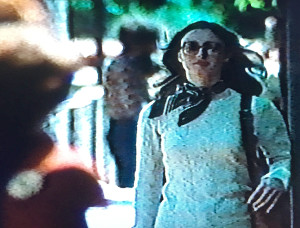 On the one hand, women try to look and act as sexy if possible, without ever indicating that they actually engage in sex and without indicating that they actually have genitals. In this kind of environment, I felt very outside in terms of my thinking that I couldn’t act according to my feelings because I didn’t want to be an outcast and I had no sexual attraction to people who I felt would brutalize me psychologically for having sex.
On the one hand, women try to look and act as sexy if possible, without ever indicating that they actually engage in sex and without indicating that they actually have genitals. In this kind of environment, I felt very outside in terms of my thinking that I couldn’t act according to my feelings because I didn’t want to be an outcast and I had no sexual attraction to people who I felt would brutalize me psychologically for having sex.
The minute I got out of that town, I went to New York to be a student at 17. I felt that in such a large city I could be so anonymous that no matter what anyone thought, I could engage in sex secretly now I’m alone. I could find out all about it.
What gave you the inspiration to make a film about her?
It occurred to me that Sharon, in some ways, was not that different than Bonnie. They were both forthright. They both had an interesting facet to their life. One didn’t have arms, and the other one was an actress in porno films by choice. When you see Sharon in the film, she talks about it and how she moved to San Francisco, and just graduated from college, and was treated badly as a secretary. When she went into this industry, she was treated very well, so she did it for a number of years.
‘A Film About Sharon’ is an 18-minute film narrated entirely by Sharon herself. She talks about her upbringing, her move to California, and her decision to make adult films.
Sharon Thorpe, from ‘A Film About Sharon’ (1975):
A friend of mine responded to an ad in the newspaper about one of these films. Then she got cold feet. The filmmakers called up where we both worked, looking for her. I was very curious about the whole thing and I decided to go in her place.
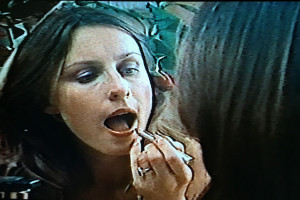 I felt very embarrassed the first time, but also very excited. The soundman being still to hear the breathing. The cameraman staring, watching for just the best angle. The light man lurking in the shadows. I’m always aware of the audience inside the camera. Always aware of what they’re going to see. What it’s going to look like to them.
I felt very embarrassed the first time, but also very excited. The soundman being still to hear the breathing. The cameraman staring, watching for just the best angle. The light man lurking in the shadows. I’m always aware of the audience inside the camera. Always aware of what they’re going to see. What it’s going to look like to them.
I don’t really think about the fact that I don’t know who I’m going to make love with. Generally, I do know. I always ask. Occasionally, they switch the persons so that when I get there, I find a different person waiting for me than I expected.
I had never known anything about pornography until I was in a film. I had never seen a film until after I was in one. Secretly, I thought of sex continually. When I found pornography, I felt very liberated to finally have this opportunity for being totally open.
Sharon is listed as the writer; why was that?
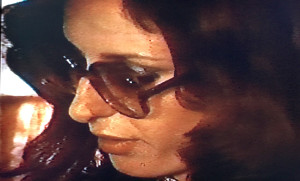 That is because all the words come out of her. What I did was I found the visuals that would go to the words, and then I cut the words and the pictures around the visuals. It’s an opportunity for her to tell her story about herself. There was a sense that the women who were in that industry were drug addicts and strange people. Maybe some were, but that wasn’t the sense that I got of what was happening at the time.
That is because all the words come out of her. What I did was I found the visuals that would go to the words, and then I cut the words and the pictures around the visuals. It’s an opportunity for her to tell her story about herself. There was a sense that the women who were in that industry were drug addicts and strange people. Maybe some were, but that wasn’t the sense that I got of what was happening at the time.
The narrative is driven by Sharon’s words. The structure of the film is interviewing her on camera, and then using her on-camera interview, as well as taped interviews, then showing a little bit of her life, and then showing the actual work… the hardcore activity. It was those three things interconnected within a film.
She comes across as being very literate in the interview. It shows her in a very positive light.
Sharon is shown reading Germaine Greer’s ‘The Female Eunuch’ (1970) and ‘Understanding the Female Orgasm’ (1973) by Dr. Seymour Fisher. The editing crosscuts mundane tasks like preparing a meal and shopping with sexual activity, and even chopping up root vegetables with thoughts on gender roles…
Sharon Thorpe, from ‘A Film About Sharon’ (1975):
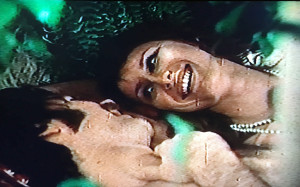 Sometimes in my own sex films, I’ve experienced a lot of negative criticism brought by sexually conservative men and women, and by radical feminist men and women. No matter what kind of reasons these people gave, in analysis every single time the reason was sex. Merely because it was sex.
Sometimes in my own sex films, I’ve experienced a lot of negative criticism brought by sexually conservative men and women, and by radical feminist men and women. No matter what kind of reasons these people gave, in analysis every single time the reason was sex. Merely because it was sex.
In her book, ‘The Female Eunuch’, Germaine Greer talked about the kind of vilification suffered by women who lived outside the sexual laws. Conversations with college girls reveal that while they tolerate sex between people who are in love, any other kind is promiscuity.
My favorite part was, “The world will not change overnight and liberation will not happen unless individual women agree to be outcasts, eccentrics, perverts, and whatever the powers that be choose to call them.”
I’m glad to be a pervert but I have to be calm.
Who else was in the film?
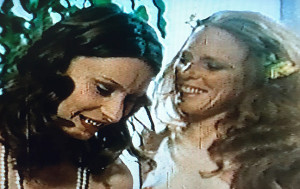 There were only two other people in the film, Ken Scudder and Clair Dia.
There were only two other people in the film, Ken Scudder and Clair Dia.
Ken was a Princeton graduate. He was getting a law degree at the time and has been a lawyer since then. Clair was clever too; she’d gotten a degree from San Francisco State College, but she was a more minor character in the film – the main characters were Sharon and Ken.
The cinematography in ‘A Film About Sharon’ is excellent. The camera moves constantly around the rooms, filming the scenes from unusual angles, even through a gold fish tank at one stage. Did you have much of a crew?
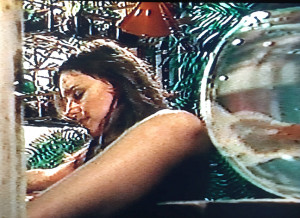 My cameraman was Ken Blakey. He’d worked with me a few times already, and had shot my ‘Bonnie Consolo’ and ‘Massage Parlor Wife’ films. I hired crewmembers on a film-by-film basis and Ken was usually the cameraman. There would sometimes be an assistant camera and a sound person, but it was mostly me. I’ve made many films that way.
My cameraman was Ken Blakey. He’d worked with me a few times already, and had shot my ‘Bonnie Consolo’ and ‘Massage Parlor Wife’ films. I hired crewmembers on a film-by-film basis and Ken was usually the cameraman. There would sometimes be an assistant camera and a sound person, but it was mostly me. I’ve made many films that way.
Ken Blakey became a noted and successful cinematographer in Hollywood with over 100 films to his name, and continues to work today.
In this film, you showed the sex in more detail for the first time.
Yes, unlike ‘Bizarre Devices’ and ‘Massage Parlor Wife’, this was a hardcore film. The sex is all there. That’s what the film is about.
Sharon Thorpe, from ‘A Film About Sharon’ (1975):
I don’t think I could be myself in the town in Midwest that I came from because I don’t think there’d be any people for me to be myself with. I just have to be myself, all by myself in the house, which would make me probably effectively a crazy old woman down the street.
The location for much of the film is a beautiful apartment – where was that?
That was my apartment in Berkeley. I added some Roman-style columns, statues, and drapes.
Where had the money for the film come from?
I raised $4,000 from two lawyers and two doctors who came up with $1,000 each, and so the whole film was made for $4,000.
How was the film distributed?
A big distribution company took it on, I forget their name. They were going to release it, and they sent me $2,000, so I gave $500 back to each of those four guys to start to repay them for the $1,000 they’d each contributed. But they never got the rest of the thousand, because I never saw any more money from it.
Do you remember how the film was released?
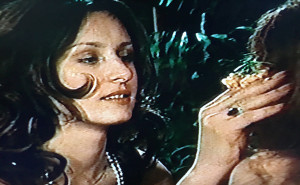 I didn’t have a premiere. I just showed it to Sharon at the studio. She thought it was great.
I didn’t have a premiere. I just showed it to Sharon at the studio. She thought it was great.
I have no idea where or how it was released. I have no idea what happened with that. That was typical; I’d make these documentaries, and I would never even go to the film festivals where they were shown. All of these festivals where my films were shown, I was entered by whoever was distributing the film. To be honest I didn’t have interest in that. I just wanted to go onto the next film.
Did ‘A Film About Sharon’ play a role in your life after that?
Just after I finished it, there was an event, ‘An Evening with Barry Spinello’, in which they showed ‘A Day in the Life of Bonnie Consolo’ which had just been nominated for an Academy Award, and also ‘A Film About Sharon’ and four or five of my previous experimental animation films.
A guy who had a distribution company called Par Films in Pasadena saw a pilot I had made, and said he would fund my future films. I was to be his bright-eyed boy in his company, and he wanted me to make a lot of films for his company. This was great news and a big deal.
So he and his wife came to see my films at this event. Par Films made strictly educational films, and when they saw ‘A Film About Sharon’… suddenly I was persona non grata. I never heard from them again.
Were you happy with how ‘A Film About Sharon’ turned out?
I was fine with how it turned out. I commissioned music for it. A piano player. They did a great job, and I’m told that it’s a beautiful film. The L.A. Times movie review by Kevin Thomas called it a remarkable documentary.
I wasn’t thrilled with the fact that I could never work for Par Films again, because I thought the future funding would be taken care of… It’s always a struggle.
4. Aftermath
What happened to ‘A Film About Sharon’ and why has it almost disappeared?
I have no idea what happened to it. I know I still have the original 16mm.
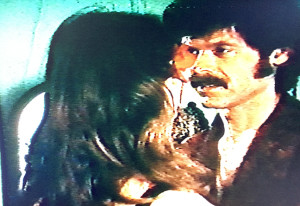 Did you keep in touch with Sharon after that?
Did you keep in touch with Sharon after that?
I never had any contact with Sharon since then.
About six months ago, I had a screening of one of my films at the Pacific Film Archives in Berkeley. Ken Scudder called me up and said unfortunately he couldn’t come, but he was interested in just touching base with me. He remembered it as a very positive experience.
Do you have any further plans for ‘A Film About Sharon’?
I have this idea of doing an update in a 2025, which will be the fiftieth anniversary of the film. It would be a postscript to the first one. In other words, fifty years later here’s what happened.
Do you have any regrets about making it – especially in light of the effect it had on working with companies like Par Films?
No – absolutely not. I’m proud of all my films.
How do you look back at that time of you life?
At that time in the mid 1970s, I was involved in one or two films of that nature, but the whole rest of my career was other than that. I had long career in lots of different things. I’d like to think people would re-discover all my work.
I think what you’re doing at The Rialto Report is extremely important. I think it’s a stepping-stone to something that has become something else. I don’t understand the porno aspect. I don’t understand what’s happening to the culture. It’s a total puzzle to me… I have no idea what it means. It has to effect in the deepest recesses of a human being’s mind, the relationship between men and women. You look at thousands of pictures of women. What the heck does it mean?
It’s more important than Hollywood movies in a way, because it affects the entire world, the entire perception of femaleness, and what the connection between men and women has become. All of the adult material is right out there, and very available.
What is this going to mean for us as a society?
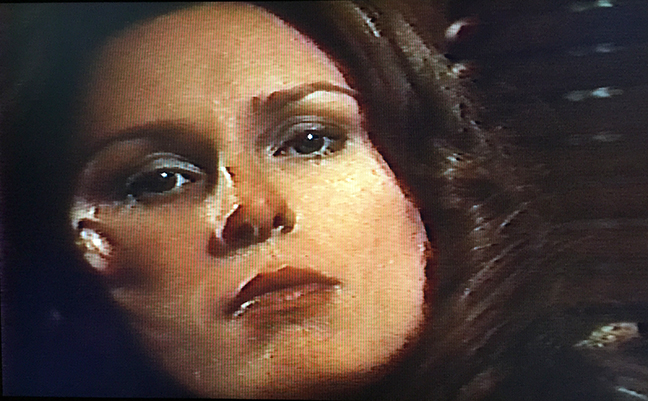
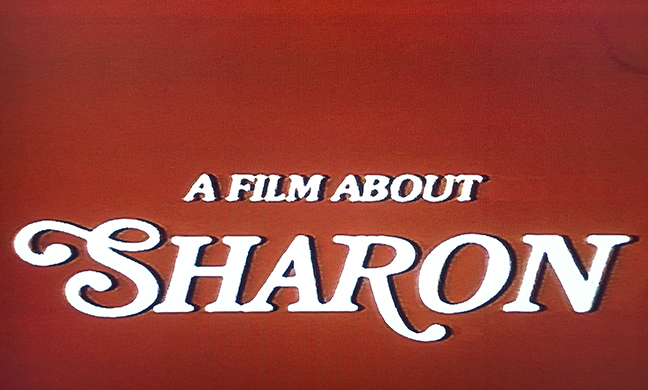

Is Sharon Thorpe still alive?
I too would love to know the answer.
I hope she is.
Sharon Thorpe an early favorite of mine,
Robbie Greenberg, I grew up with in the Bronx and were close friends through High School.
I was always curious about this film and have tried to get hold of a copy over the years. Sharon Thorpe is one of the most fascinating figures from West Coast. Somehow she always seemed to bring an extra dimension of intelligence to the films – God knows how, but she had this unique quality. I love to know more about her memories.
Please, please can we have an interview with the amazing Ms. Thorpe? This has just whet my curiosity for more Thorpery!
Any idea where this film can be viewed?
Hi SF Dreamer – it’s available at a handful of university media centers across the country. If you Google the film you can find out which ones (that’s what we did). It’s worth a trip if you can find it nearby!
Would you mind sharing your search criteria? All I am coming up with is stuff about Sharon Stone.
If he still has 16mm elements I hope you’ve put him in touch with folks like Vinegar Syndrome or Distribpix. It’s incredible hearing the stories behind impossibly obscure films like this and Anna Obsessed, but reading about them just makes me want to see them even more!
Amazing interview. Bravo!
Bill, anyone…wasn’t she in Marilyn and the Senator?
Great piece, as usual, from TRR! Oddly enough, I only recently discovered and viewed Massage Parlor Wife for the first time, and it’s indeed one of the most unique sexploitation flicks of the day. I agree that Distribpix or VS would be great candidates to release this Sharon Thorpe doc to the masses!
When I was a senior in high school, I read an article in Crawdaddy magazine about Sharon. A couple years later, I saw her perform in Sex World, where she re-enacted the Johnny Keyes “Behind The Green Door” scene. She acted very well. I’d love to be able to see “A Film About Sharon.”
Sharon Thorpe (stage name) retired from porn, got a masters degree in electrical engineering, married a professor from a local art college and worked for many years as an engineer for a major company. I understand she often attends her college reunion in New York.
Barry Spinello – producer/director of thefilm
Hoping you do revisit this in 2025, particularly if “Sharon” would be up for contributing in some way. It’d be interesting to hear, in general terms, how her former career ended up affecting her life, and her thoughts on how the internet effectively makes photos and videos perpetually available to a worldwide audience. Would she have made the same choices, knowing what she knows now?